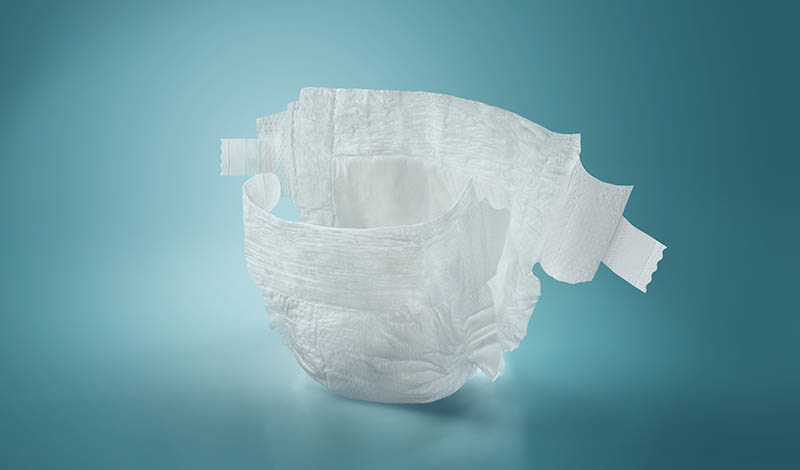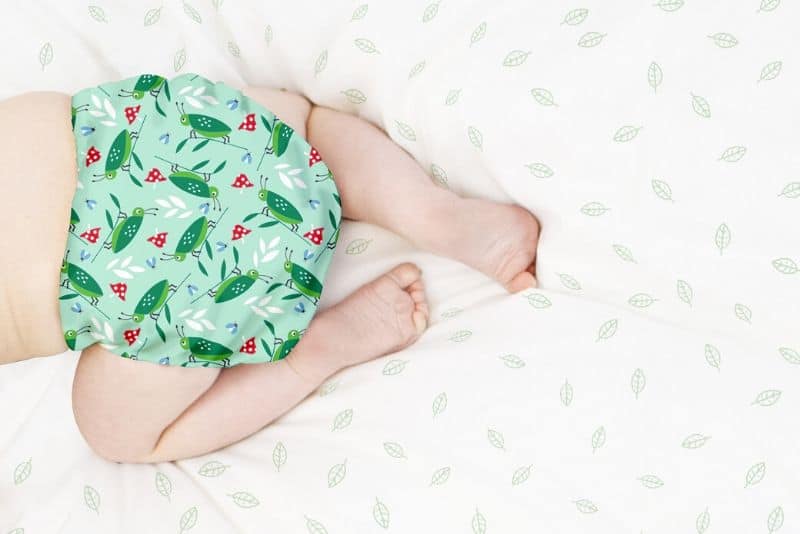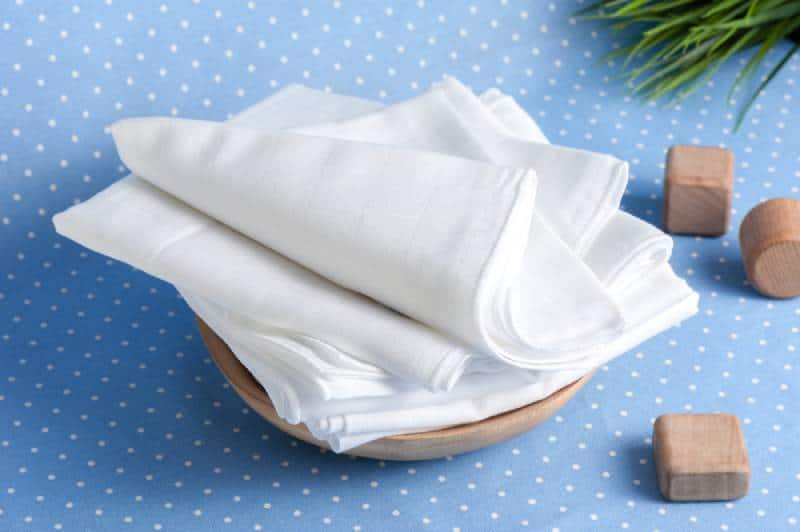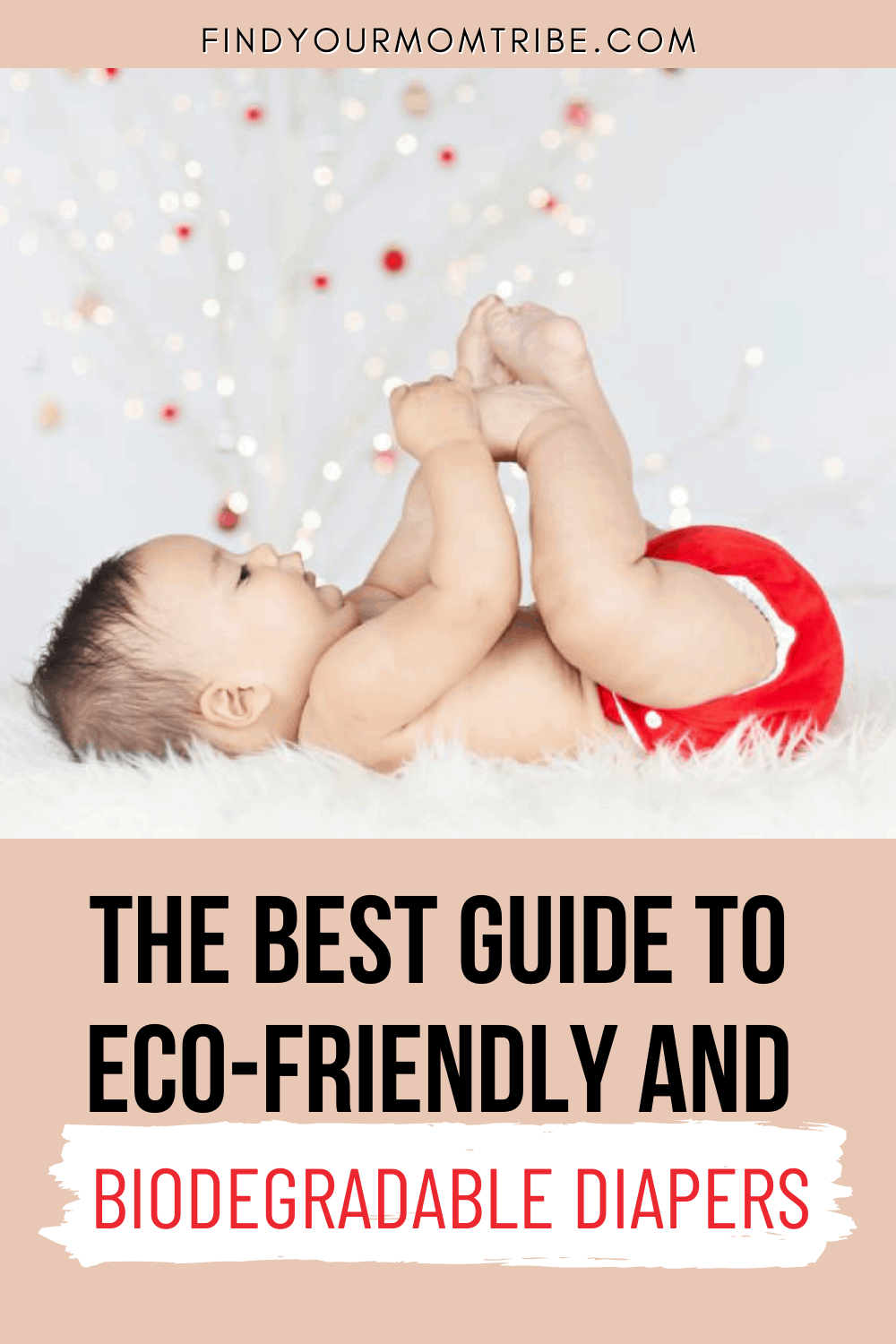Are you an environmentally conscious mama who is well aware of just how many disposable diapers you go through in a month? Then I’m not surprised you’re interested in trying biodegradable diapers.
As the name suggests, these diapers are able to biodegrade naturally as opposed to regular diapers that contain plastic and take hundreds of years to decompose in a landfill. But there’s more to these Earth-friendly diapers than you think.
For example, the best way to dispose of your baby’s dirty yet eco-friendly nappies is to send them to a composting facility. If you throw them in the trash, they’ll still end up in a landfill along with all other diapers.
While they won’t take hundreds of years to decompose, only composting will ensure the lowest environmental impact. But not everyone has access to such facilities, so throwing them out with the rest of your trash is sometimes inevitable.
What’s more, not all diapers that are marketed as biodegradable are compostable as they still may contain certain ingredients that aren’t eco-friendly, making cloth diapers one of the best sustainable alternatives.
Still, I believe it’s important for parents to get educated about eco-friendly alternatives to disposable diapers – when it comes to saving our planet, every step counts!
What Are Biodegradable Diapers

Are diapers biodegradable? That depends on the diaper itself.
When it comes to disposable diapers, every parent is familiar with the biggest brands such as Pampers and Huggies. But it’s no secret these major diaper brands aren’t eco-friendly, as they include a variety of plastic ingredients. And plastic, as everyone knows, takes hundreds of years to decompose.
This means that very popular diaper brands can be bad for the environment and eco-conscious parents are increasingly looking for more sustainable options.
Enter biodegradable diapers!
Single-use biodegradable diapers are typically made from materials that are environment-friendly, and the companies that make them employ sustainable manufacturing methods to reduce their impact on the environment.
The key, however, lies in how you dispose of these diapers.
If you purchase biodegradable diapers and simply throw them in the trash, they will end up in a landfill just like any other disposable diaper. Still, they will decompose much faster than regular disposable diapers, which lowers their environmental impact.
The most important thing to look out for when shopping for biodegradable diapers is that they are compostable. In other words, you can send them to a local composting facility where they will be broken down much more quickly than in a landfill.
Likewise, it’s key to make the distinction between the different biodegradable disposable diapers.
For example, diapers by Hello Bello and The Honest Company aren’t 100 percent biodegradable, and neither are Seventh Generation diapers.
They are a fine choice if you wish to choose a brand that makes an effort to produce diapers that are slightly better for the Earth, but if you are really passionate about composting your little one’s diapers, then these are not the brands for you.
Poof diapers, on the other hand, are commercially compostable.
I must add that a compostable diaper won’t be of much use if you don’t have a commercial composting facility in your area, so make sure to do some research regarding the options where you live and get in touch with the diaper manufacturer to see if and how you can compost their diapers.
4 Best Biodegradable Diapers
The diapers below are all biodegradable to a certain extent, but they all have one thing in common – they are eco-friendly.
Although you might not be able to compost all of them (or might not want to), these diaper brands are certainly better for the health of our planet than some of the most popular diaper brands.
They are an excellent place to start if you’d like to transition to a more sustainable way of life and support companies that take the protection of our environment seriously.
1. Andy Pandy Eco-Friendly Premium Bamboo Disposable Diapers
- WELCOME TO A WORLD OF NO DIAPER RASHES! There is nothing worse than having a baby scream in agony from a painful diaper rash. We are so pleased to announce we finally have the solution youve been waiting for your whole parenting career… Our premium Andy Pandy Diapers are the “Bees Knees” when it comes to comfort. The moisture wicking and thermal regulating bamboo prevents your babys delicate skin from getting painful irritation and rashes. Enjoy a happier baby, and an even happier you!
- DIAPERS AS SOFT AS YOUR BABY’S BOTTOM! We know when it comes to your beautiful baby, you want to give them the best. Our angelically-soft bamboo disposable diapers are ultra-comfortable to wear, and they are hypoallergenic and antibacterial to prevent irritation and chaffing. Plus, our deluxe Andy Pandy diapers have a aloe liner to keep your sweet baby’s skin hydrated and prevent itchiness. It is pretty much the best thing ever for your baby’s bottom! Velcro tape and adhesive
Prices pulled from the Amazon Product Advertising API on:
Product prices and availability are accurate as of the date/time indicated and are subject to change. Any price and availability information displayed on [relevant Amazon Site(s), as applicable] at the time of purchase will apply to the purchase of this product.
Andy Pandy diapers have long been the choice of parents who prefer natural diapers but aren’t willing to settle on a diaper that isn’t as absorbent as a regular diaper.
These bamboo diapers are PVC-free, chlorine-free and phthalate-free, and are hypoallergenic, so they’re a terrific option for kiddos with very sensitive skin.
If you’re scared to switch to a bamboo diaper out of concerns that it won’t be able to provide protection against blowouts or leakage, you have nothing to worry about with Andy Pandy.
Their diapers include a special barrier against leaks without sacrificing breathability.
Regardless of how active your baby is, this diaper will hold up well to crawling, cruising, and any other fun adventures your little one embarks on. The sides are stretchy, creating a comfortable fit at all times.
Many mainstream diaper companies offer wetness indicators, usually in the form of a line that changes colors once a diaper needs to be changed, but you’ll be happy to hear that this is a feature found in the Andy Pandy diaper too.
It’s located on the back and will change from yellow to blue or green once the diaper is full. This way, your baby never has to be in a wet diaper for too long and you don’t have to resort to feeling the inside of the diaper to check how wet it is.
Other useful features are its resistance to odors and softness, so your baby can feel snug and comfy without those pesky diaper rashes.
2. ECO BOOM Biodegradable Bamboo Baby Diapers
- Environmental-friendly and skin-friendly: Use of quality bamboo fiber on both of its back and top sheets, Uses TCF (total chlorine free) pulp, which is the most advanced none-chlorine bleaching treatment.
- Naturally hypoallergenic making it ideal for babies with sensitive skin. Made from biodegradable bamboo, it is extremely soft and silky to the touch, yet strong and absorbent.
- Big-ear type side tape can provide triple elasticity. Super flexibility ensures not to be too tight on baby’s waist. The Velcro tape material also avoids cutting from Baby’s tender skin.
Prices pulled from the Amazon Product Advertising API on:
Product prices and availability are accurate as of the date/time indicated and are subject to change. Any price and availability information displayed on [relevant Amazon Site(s), as applicable] at the time of purchase will apply to the purchase of this product.
Eco Boom diapers are totally chlorine free and even contain aloe oil to be as gentle as possible on your munchkin’s skin.
The bamboo on the back and top sheet makes for a very comfortable diaper, even when your baby is on the move.
And considering that it’s hypoallergenic and fragrance-free, the chances of your baby’s skin getting irritated while wearing this diaper are much lower.
Eco Boom promises up to 12 hours of protection thanks to their high-quality Super Absorbent Polymer (SAP), the substance that’s responsible for soaking up moisture inside of the diaper.
The diapers are available in sizes S through XL (from 6 to 26+ pounds) so you can rely on these diapers to take your little one all the way through to potty training.
3. Bambo Nature Eco Friendly Baby Diapers
- Our classic, eco friendly diaper design minimizes the risks of allergy and diaper rash
- Ultra absorbent and perfect for both daytime and overnight use
- Plush, super soft non woven back sheet protects baby’s delicate skin
- Size 3 fits weights from 11 to 19 pounds see size chart for more Deta
Prices pulled from the Amazon Product Advertising API on:
Product prices and availability are accurate as of the date/time indicated and are subject to change. Any price and availability information displayed on [relevant Amazon Site(s), as applicable] at the time of purchase will apply to the purchase of this product.
Although these diapers aren’t 100 percent biodegradable, they are an affordable eco-friendly option, which is a rarity considering that most eco-friendly diapers are quite pricey.
They are soft and gentle on the skin and their highly absorbent core does a great job at preventing leaks. Their breathability makes them comfortable to wear and minimizes the risk of rashes.
4. Eco by Naty – Plant-Based Premium Ecological Diaper
- Soft on babys skin: 0% oil plastic on skin with breathable & absorbent plant-based fibres for a comfortable fit
- Premium Protection: No leakage or blowouts. Hypoallergenic & Dermatologically tested. Free of chlorine bleaching, fragrances, lotions
- Eco-friendly: Only diaper to receive OK biobased certification. Renewable plant-based packaging. Certified by TÜV Austria
Prices pulled from the Amazon Product Advertising API on:
Product prices and availability are accurate as of the date/time indicated and are subject to change. Any price and availability information displayed on [relevant Amazon Site(s), as applicable] at the time of purchase will apply to the purchase of this product.
Eco by Naty diapers come with a core that’s made mostly from wood pulp from sustainable forests with an FSC certification, so not only are the diapers good for the environment but so is the production process, too.
However, they are not 100 percent biodegradable.
Like many other eco-friendly brands, Naty diapers are dye-free, dioxin-free, phthalate-free, latex-free, and GMO-free.
If your baby has sensitive skin, it’s worth giving these diapers a try as they are designed to prevent rash and other skin reactions.
Making Sure Your Baby’s Diapers Aren’t Toxic

When you take a look at the label of a diaper box, it’s easy to get a headache from all the hard-to-read ingredients and chemicals.
In addition, there are certain chemicals you need to look out for and make sure that the company has declared that their diapers are free from such ingredients.
If you can’t find this information on the diaper box shown on their website, don’t hesitate to shoot the company an email and inquire about a particular ingredient. Here are a few ingredients you should keep an eye out for.
Tributyltin (TBT)
TBT is an ingredient that is toxic to the environment (especially marine life) and most eco-friendly diaper manufacturers state that their diapers are TBT-free.
Fragrance
Many regular diapers contain perfume or fragrance to cover the smell of a dirty diaper. At first, you might not think this is a big deal – you may even like the scent.
However, fragrances can contain allergens that could lead to skin irritations and even asthma attacks.
Considering that fragrance isn’t key to the performance of a diaper, make sure that the one you purchase is labeled as fragrance-free.
If the manufacturer hasn’t disclosed this, don’t automatically assume the diapers aren’t scented – check Amazon reviews or call customer service.
Lotion
Just like fragrance, lotion can also cause allergic reactions because it’s difficult to know what the lotion is made from and whether there are any ingredients your little one could be allergic to.
As such, it’s best to avoid diapers that contain it, unless the company discloses the ingredients.
Dioxins
While fragrance and lotions can irritate your baby’s skin, dioxins are extremely toxic ingredients for both the environment and your child, considering they are carcinogens.
Dioxins are released when the fluff pulp in the diaper is bleached with peroxide or chlorine. That’s why it’s important to ensure the diapers are totally chlorine-free, although some come with a dioxin-free label too.
A note on super absorbent polymer (SAP) and polypropylene
Considering that these two ingredients are a staple of the majority of single-use diapers, whether they’re environmentally friendly or not, I’m sure you’re interested in whether they are toxic or not.
When it comes to SAP, this is the ingredient that allows the diaper to soak up liquid and the reason disposables have much better absorbency than cloth diapers. Although it can cause dryness, it’s not toxic for your child.
It can be found in regular and natural diapers, but there are companies that have been coming up with more ecologically acceptable alternatives that aren’t petroleum-based.
Polypropylene, while still a plastic, is also not toxic for your child. It can be found in the inner lining of the diaper. Some eco-friendly companies have replaced it with plant-based polylactic acid (PLA).
Consider Cloth Diapers

Cloth diapering is arguably the most sustainable option for parents who are passionate about saving the environment and want to avoid single-use diapers – biodegradable or not.
Although using a cloth diaper in this day and age might earn you hippy status, it’s important to remember that disposable diapers only appeared in the last century – before that, all parents relied on cloth diapers.
Of course, this isn’t for everyone. Infants go through many diapers a day, meaning that you’ll need to stock up and spend a lot of money upfront on reusable diapers.
You might not have the time or the will to go the extra mile of cleaning them, especially with a new baby, and might find yourself wishing that you had just gone with Huggies instead.
What’s important is to not fall into the trap of becoming your own diaper police – no one says you need to exclusively use reusable diapers from day one!
For example, you can use single-use eco-friendly diapers for the first few weeks or months of your baby’s life and slowly make the transition to cloth.
Likewise, some parents prefer to take disposables when they’re on the go with their baby but keep cloth diapers for everyday use at home.
And since disposables have much better absorbency than cloth, it’s not uncommon to read that some parents prefer disposables during the night.
You might have also heard the argument that cloth diapering is just as bad for the environment because you’ll need to wash them frequently, which requires water and electricity.
However, these diapers still have a lower impact on the environment when compared to single-use diapers.
Many babies also struggle with diaper rash when wearing disposables, making parents switch from brand to brand in hopes of finding one that will be more gentle on their baby’s skin.
With a cloth diaper, the chances of diaper rash are lower because they’re typically made from breathable materials that aren’t as irritating on the skin.
Such baby diapers are also free from harmful chemicals that can be found in disposable diapers, making them safer for your munchkin.
Because there are many different kinds of cloth diapers, take your time reading up on different types and don’t make the mistake of ordering two dozen diapers from a single brand at once.
Think of it like buying a car – you’d want to test drive different models first before making a purchase.
It’s not unusual for moms to splurge on a set of reusable diapers, only to realize that they don’t work for their baby, so they end up selling them online – many of them unused.
Take advantage of such opportunities to save some money and check Craigslist or even local parenting groups on Facebook to see if anyone is selling them.
RELATED: The Best Guide To Hand Washing Cloth Diapers And Its Benefits
Final Thoughts
Even though we’re far from having access to single-use diapers that also have a minimal impact on the environment and can biodegrade quickly, it’s amazing to see so many diaper companies with a strong commitment to sustainable manufacturing practices.
Although some eco-friendly brands still contain some plastics, I believe we’re moving in the right direction – and you can always switch to using cloth diapers if you’d like to reduce your use of all single-use diapers – eco-friendly or not.
Like this post? Please share or pin it for later. You can also stay in the loop and follow us on Facebook, Instagram or Pinterest.

We love honesty! Find Your Mom Tribe is an Amazon Associate and we earn from qualifying purchases through affiliate links at no extra cost to you. Please see our full Amazon Affiliate disclosure for more information.

